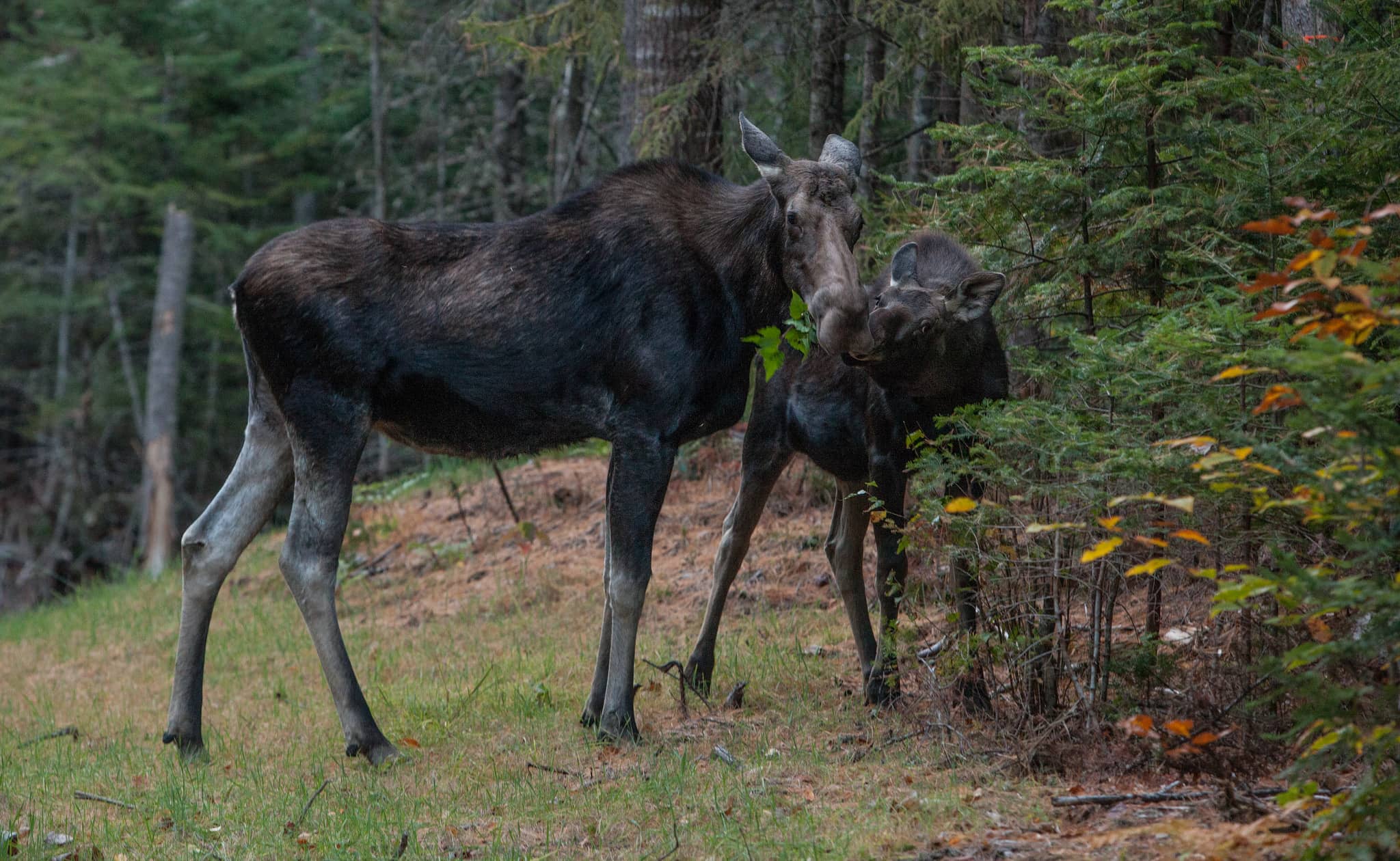New Hampshire Collared Moose Reach 74 Percent Calf Mortality
OutdoorHub Reporters 06.09.15

It seems that New Hamsphire’s already-dwindling moose population is about to become even smaller. According to WMUR, scientists from the Maine Department of Inland Fisheries and Wildlife say that winter ticks were responsible for the deaths of 74 percent of all collared moose calves last year, which is indicative of the wider population as a whole.
Despite the alarmingly high rate of mortality, experts said they are not surprised. New Hampshire’s moose population has declining slowly for years, from 7,000 moose in 1999 to about 4,000 animals today.
“In New Hampshire, winter tick is becoming a chronic problem leading to reduced productivity and chronic increased mortality,” wrote Kristine Rines, the state’s moose project leader.
Dipping numbers are also affecting the number of hunting tags being issued. New Hampshire officials will only be issuing 105 moose permits this year, about seven times less than what the state issued a decade ago. Next year’s moose hunt is also in jeopardy since some areas of the state have so little moose, officials are considering a suspension of the hunting season. While it may not be a blow that New Hampshire’s $61 million hunting industry cannot recover from, it does bode badly for the species.
“We don’t know what the future holds, but we are concerned,” Rines said.
Experts say that the future of the iconic species is uncertain, but promised that moose are not going to disappear from New Hampshire anytime soon. According to Rines, a number of factors are responsible for the decline, including winter tick, brainworm, and vehicle collisions.
“We know that moose numbers are below goal in several regions, and moose weights and reproduction are also down in some regions,” Rines wrote. “In response, we’ve been dropping permit numbers since 2007. We’ve gone from 675 permits to 275 permits issued in 2012‐2013… if permit reductions do not work, things could change appreciably in the future.”
Nearby Maine, with its population of 60,000 moose, have much more to lose from the growing prevalence of winter ticks, which have caused the appearance of the so-called “ghost moose.”
“People come to Maine, they want to eat lobster, but they want to see moose.” Maine biologist Lee Kantar told National Geographic. “It’s a little surprising to a lot of folks—how can a tick kill a moose?”
The ticks are more formidable than they seem. Since they feed on blood, ticks can literally drain the blood from a moose calf, forcing it to cannibalize its own fat—and muscle and bone marrow—to survive. Most animals that contract the ticks will groom itself to get rid of the pests, but moose generally lack the instinct and are unable to shed the ticks effectively. This means that a single moose is capable of harboring thousands of the ticks, which feed until they drop off and reproduce. Biologists are now hoping that this year’s lingering snowfall has killed a larger number of ticks than usual, therefore reducing the moose mortality next year. However, that is yet to be seen.
“We won’t know for a number of weeks what’s transpired,” Rines said.

